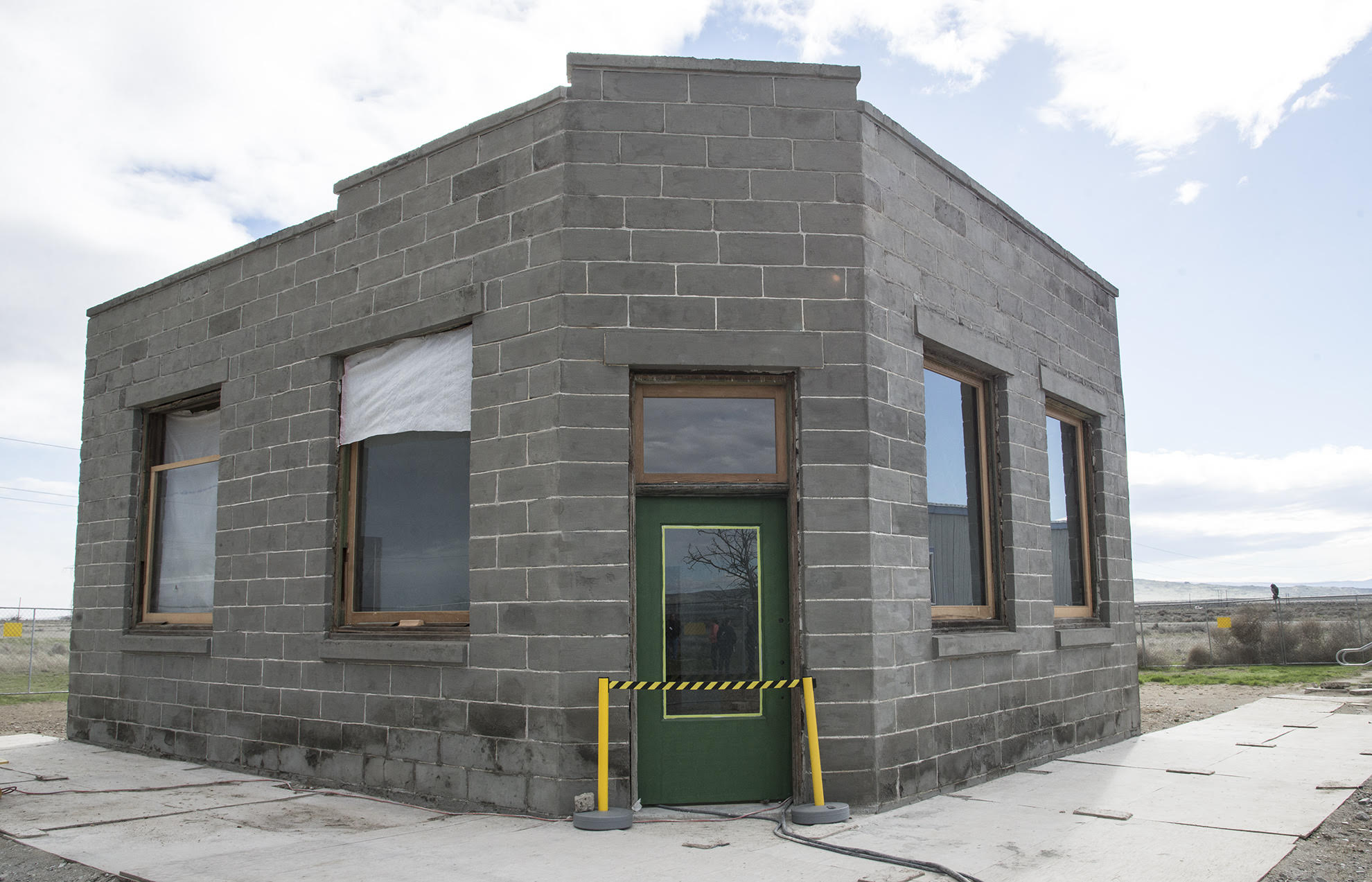Before World War II, the town of White Bluffs, WA, had a bank, hotel, newspaper, ice cream parlor, and other businesses and places where the community would gather. In 1943, the Manhattan Project requisitioned the town of White Bluffs, WA. Today, the White Bluffs bank (pictured, photo courtesy of Dan Ostergaard) is the only remaining structure from the original townsite. Before its forced abandonment, the bank had two employees and was robbed on at least one occasion.
The Department of Energy recently completed a multi-year rehabilitation project on the bank, which had suffered significant deterioration over the years. “We almost lost her,” said Colleen French, the National Park program manager for the Department of Energy at Hanford. But thanks to French’s efforts and an excellent team of engineers and historic preservationists, the building has been restored. In May, the rehabilitation project was awarded the 2018 Washington State Historic Preservation Office’s Valerie Sivinski Award for Outstanding Rehabilitation.
To visit the bank and other pre-war Manhattan Project sites, sign up online. Tour registration is also open for the 2018 season to visit the B Reactor. Check out AHF’s “Ranger in Your Pocket” programs on the B Reactor and pre-war Hanford before your visit!
Efforts to preserve the Naval Air Station Pasco Old Tower and transform it into an aviation museum are proceeding. The nonprofit organizing the campaign Save the Old Tower received a surprise $50K donation from an anonymous donor “In honor of veterans.” The campaign also recently received donations of a Link simulator and other artifacts.
In Santa Fe, the New Mexico History Museum opened a new exhibit on June 3, “Atomic Histories.” The exhibit includes two installations by Santa Fe artist Meridel Rubenstein, “Oppenheimer’s Chair” and “The Meeting.” According to the Albuquerque Journal, the installations, “comprised of photos, videos, glass and steel, ground the exhibition of artifacts and photographs documenting the creation of the atomic bomb.” Several interviews by AHF will also be available for visitors to watch in the exhibit, which is open through May 2019.
On June 1, the building at 101 Bus Terminal Road in Oak Ridge, TN was mostly demolished. After the Manhattan Project, it served as a security communication center. The building was connected by radio to Building 9213, which stored uranium-235 at the Y-12 Plant for about a year. 101 Bus Terminal Road was later used by the military and the Oak Ridge Police Department. According to Oak Ridge Today, “A small section of the Bus Terminal Road building that still had historic artifacts—two holding cells and a heavy, bulletproof steel door—remained standing, surrounded by demolition debris, on Wednesday and Thursday.” For more, please see Demolished building once helped protect city, enriched uranium at Y-12.
The Mound Cold War Discovery Center in Dayton, OH, is now open to the public on Wednesdays through Saturdays. During the Manhattan Project, scientists working for the Dayton Project worked on developing the polonium initiator for the Fat Man atomic bomb. After the war, Mound Laboratory became a leading research and development facility for various US science programs, including nuclear weapons and energy and space programs. For more about the history of Dayton and Mound Laboratory, please see The amazing transformation of the historic Mound Labs in Miamisburg, from atomic triggers to office space.





